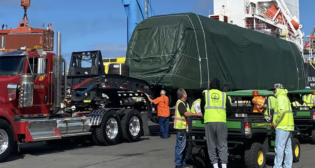
AAR to DOT: GAO agrees we don’t need ECP
Written by Nebraska Digital, administratorThe Association of American Railroads says the Department of Transportation should withdraw its rule on electronically controlled pneumatic (ECP) brakes for crude oil trains after a review released Oct. 12 by the United States Government Accountability Office.
DOT’s ECP mandate is part of its May 2015 rulemaking on DOT-117 tank cars. Trains meeting the definition of a “HHFUT” (high-hazard flammable unit train), defined as “a single train with 70 or more tank cars loaded with Class 3 flammable liquids,” with at least one tank car with Packing Group I materials, must be operated with an ECP braking system by Jan. 1, 2021, or reduce maximum speed to 30 mph. All other HHFUTs must have ECP braking systems installed after 2023. (Click HERE for further details.)
“The GAO’s conclusions validate the freight rail industry’s position that the DOT had negligible data or testing results to justify the mandating of ECP brakes,” said AAR President and CEO Edward R. Hamberger. “The DOT should withdraw the brake rule and fully implement the GAO’s recommendations.”
The GAO report, which was authorized by the 2015 FAST Act, stated the DOT’s Regulatory Impact Analysis (RIA) “lacked the necessary justification to mandate ECP brakes,” Hamberger noted. “The RIA also did not contain detailed information on all inputs and assumptions. The GAO review stated: ‘Such information is necessary to allow third parties to independently and adequately review DOT’s modeling efforts and assess its conclusions.’ Industry research and years of experimenting in real-world operating environments show ECP brakes are unreliable and have a minimal safety impact over conventional braking systems currently in place.”
Hamberger added that the freight rail industry “supports the GAO’s recommendations directing the DOT to be more transparent by publishing information allowing a third party to fully assess and replicate the analysis, to conduct additional studies on all aspects of ECP braking, and to create a data-collection plan involving the railroads and operational experiences using ECP brakes. America’s freight railroads are constantly incorporating new safety critical technologies to make the country’s 140,000-mile rail network even safer, including sophisticated trackside detectors, specialized inspection vehicles and drones to supplement track inspection programs. Federal statistics show freight rail safety continues to improve, with the past five years being the safest on record.”



